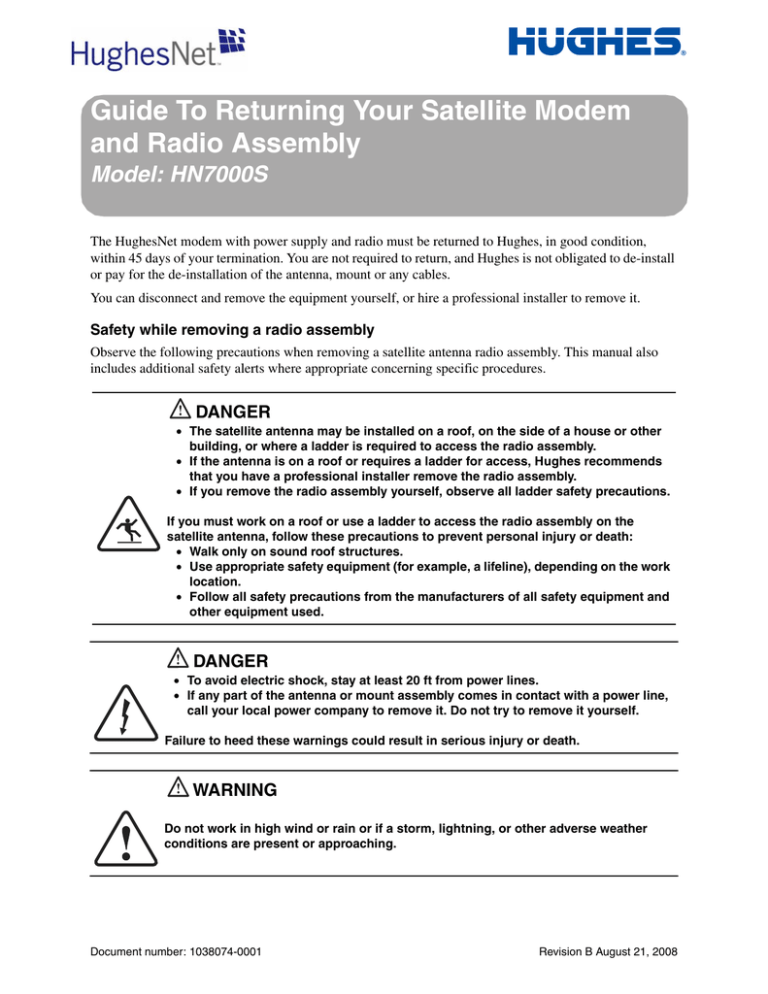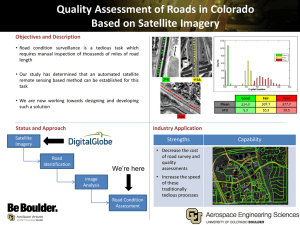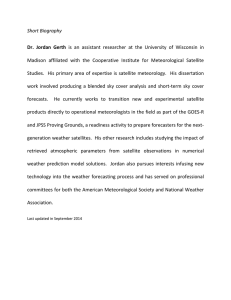
Guide To Returning Your Satellite Modem
and Radio Assembly
Model: HN7000S
The HughesNet modem with power supply and radio must be returned to Hughes, in good condition,
within 45 days of your termination. You are not required to return, and Hughes is not obligated to de-install
or pay for the de-installation of the antenna, mount or any cables.
You can disconnect and remove the equipment yourself, or hire a professional installer to remove it.
Safety while removing a radio assembly
Observe the following precautions when removing a satellite antenna radio assembly. This manual also
includes additional safety alerts where appropriate concerning specific procedures.
DANGER
• The satellite antenna may be installed on a roof, on the side of a house or other
building, or where a ladder is required to access the radio assembly.
• If the antenna is on a roof or requires a ladder for access, Hughes recommends
that you have a professional installer remove the radio assembly.
• If you remove the radio assembly yourself, observe all ladder safety precautions.
If you must work on a roof or use a ladder to access the radio assembly on the
satellite antenna, follow these precautions to prevent personal injury or death:
• Walk only on sound roof structures.
• Use appropriate safety equipment (for example, a lifeline), depending on the work
location.
• Follow all safety precautions from the manufacturers of all safety equipment and
other equipment used.
DANGER
• To avoid electric shock, stay at least 20 ft from power lines.
• If any part of the antenna or mount assembly comes in contact with a power line,
call your local power company to remove it. Do not try to remove it yourself.
Failure to heed these warnings could result in serious injury or death.
WARNING
Do not work in high wind or rain or if a storm, lightning, or other adverse weather
conditions are present or approaching.
Document number: 1038074-0001
Revision B August 21, 2008
Before you begin...
This document provides instructions on how to de-install and return your equipment. You must:
• Disconnect and remove the satellite modem
• Disconnect and remove the radio assembly from the antenna
• Pack and ship the equipment
What equipment do I return?
• The satellite modem (Figure 1), with:
– Pedestal base
– Power supply
• The radio assembly (Figure 2)
AC power
cord
Power
supply
Pedestal base
DC power cord
T0180006
Figure 1: Satellite modem
Satellite modem refers to the indoor unit. The satellite modem is connected to your computer and to the
outside radio assembly, as shown in Figure 2. The radio assembly is part of the outside satellite antenna
(sometimes referred to as a dish).
Radio
assembly
Antenna
d i g i t a l
The radio may be covered
by an optional shroud, as
shown here.
TM
d i g i t a l
TM
VAXstation 3100
Computer
T0180003
Satellite modem
Figure 2: Satellite modem and radio assembly
You do not need to return small hardware such as nuts, bolts, washers, and screws.
2
1038074-0001 Revision B
Consider the antenna location
To remove the radio assembly, you have to go to your outside satellite antenna. Depending on where the
antenna is located, you may want to have a professional installer remove the radio assembly. For additional
information, see If your antenna is on a roof or requires a ladder to access . . . on page 5 .
Packing materials
To pack the equipment for shipping you will need:
• A corrugated cardboard box, undamaged, with the following minimum dimensions:
– Height: 12 inches
– Width: 12 inches
– Length: 24 inches
Note: The dimensions given above are guidelines. For example, some boxes with a length
shorter than 24 inches might be large enough, depending on the height and/or width of the box
and the placement of the equipment in the box.
• Bubble wrap packing material (enough to nearly fill the box)
• Packing tape
• Shipping label
If you have questions . . .
If you have questions or need help, call Hughes Customer Care, toll-free, at 1-866-347-3292.
Disconnecting the satellite modem
You must disconnect the satellite modem before you remove the radio assembly.
WARNING
You must completely disconnect the satellite modem before disconnecting the radio
from the satellite antenna. Failure to completely disconnect the indoor equipment may
result in exposure to radio frequency energy.
1. Unplug the satellite modem power cord from the power outlet or surge protector. Refer to Figure 3 as
you disconnect the modem.
CAUTION
Do not unplug the DC power cord from the modem until after you have disconnected
the AC power cord from the surge protector or power outlet.
1038074-0001 Revision B
3
Ethernet
Computer
Unplug power
cord from power
outlet or surge
protector first.
Ethernet
cable
Surge
protector
AC power
cord
Power
supply
Pedestal base
DC power cord
Receive cable
T0180005
Transmit cable
Figure 3: Disconnecting the power cord from the power source
2. Unplug the DC power cord from the satellite modem.
3. Disconnect the receive cable from the satellite modem. You may need to use a 7/16-inch wrench. If the
cable connector is warm, let it cool first.
4. Disconnect the transmit cable from the satellite modem.
5. Disconnect the Ethernet cable from the satellite modem and from the computer.
Keep these parts together:
• Satellite modem and pedestal base
• Power supply
Note: Some power supplies have a detachable power cord. If your power supply has a
detachable power cord, please return it with the power supply.
The satellite modem is now ready to be packed.
Removing the radio assembly
This section contains instructions for disconnecting and removing the radio assembly from the outside
satellite antenna. Removing the radio assembly requires just a few main steps:
1. Remove the cables from the radio assembly.
2. Loosen the bolts that hold the assembly in place.
3. Remove the radio assembly.
This section describes these steps in detail.
4
1038074-0001 Revision B
You must determine what kind of radio assembly you have so you can find the correct instructions for
removing it. The radio assembly types are illustrated in Determining your radio type on page 5.
If your antenna is on a roof or requires a ladder to access . . .
You can disconnect and remove the radio assembly yourself, or have a professional installer remove it. If
you remove the equipment yourself, you must be aware of the following safety information:
WARNING
• The satellite antenna may be installed on a roof, on the side of a house or other
building, or where a ladder is required to access the radio assembly.
• If the antenna is on a roof or requires a ladder for access, Hughes recommends
you have a professional installer remove the radio assembly.
• If you remove the radio assembly yourself, observe all ladder safety precautions.
• Watch out for power lines. Stay at least 20 ft from power lines. Do not touch or
contact them in any way.
Before proceeding, make sure you have disconnected the Ethernet cable and satellite connections as
explained in the previous section.
WARNING
• You must completely disconnect the satellite modem before disconnecting the
radio from the satellite antenna.
• Failure to completely disconnect the satellite modem may result in exposure to
radio frequency energy.
Tools you will need
To disconnect and remove the radio assembly, you need the following tools:
Table 1: Tools needed
Tools
Details
(2) 1/2-inch wrenches
To remove the bolts from the radio assembly.
1/4-inch Phillips head screwdriver
or
3-mm Allen wrench
To remove the radio assembly from the feed horn.
Electrical tape
If you might use the satellite modem’s cables in the future, you will need
electrical tape to seal the connectors at the antenna location (outside).
Determining your radio type
Determine what type of radio assembly you have, so you can find the instructions for removing it:
1. Look at your antenna and radio assembly and use Figures 4 and 5 to determine what type of radio
assembly you have.
1038074-0001 Revision B
5
2. When you find the figure that looks like your radio assembly, look below the figure to see which
section explains how to remove your radio assembly.
Note: The type A and type B radio assemblies are actually the same; the difference is the
antenna and how they are mounted. (See Figures 4 and 5.)
Radio assembly
Feed horn
The angle of the feed tube
may not be as shown.
Waveguide
Transmitter
Figure 4: Type A radio assembly (consists of radio, transmitter, and waveguide)
For type A radio assembly, see Removing a type A radio assembly on page 7.
Radio assembly
Waveguide
Feed horn
Transmitter
The angle of the feed arm
may not be as shown.
Figure 5: Type B radio assembly (consists of radio, transmitter, and waveguide)
6
1038074-0001 Revision B
For type B radio assembly, see Removing a type B radio assembly on page 8.
Removing a type A radio assembly
Follow these steps to remove a type A radio assembly:
1. Use a 7/16-inch wrench to loosen and remove the two cables from the connectors at the two locations
indicated by the arrows in Figure 6.
Optional: If you think you might use the cables in the future, wrap the cable connector ends tightly
with electrical tape to keep water out.
Figure 6: Where to loosen cables (type A)
2. Use a ½-inch wrench to remove the bolt from underneath the feed horn. The bolt to be removed is
indicated by an arrow in Figure 7. It passes through the feed tube, near the end of the feed tube.
Close-up
view of bolt to
be removed
Figure 7: Remove bolt from under feed horn (type A)
1038074-0001 Revision B
7
3. Hold the transmitter so it doesn't fall while you remove the two bolts (shown in Figure 9) from the top
of the feed tube, above the transmitter. Use a ½-inch wrench.
Figure 8: Removing two bolts from the feed tube (type A)
4. Remove the radio assembly.
The waveguide, transmitter, and feed horn are all attached.
Note: You are not required to return the feed horn, but you are advised to leave it on the
radio assembly because it is difficult to remove.
The radio assembly is now ready to be packed. You do not need the instructions in the rest of this section;
go to Packing and shipping the equipment on page 10.
Removing a type B radio assembly
Follow these steps to remove a type B radio assembly:
8
1038074-0001 Revision B
1. Use a 7/16-inch wrench to loosen and remove the two cables from the connectors at the two locations
indicated by the arrows in Figure 9.
Optional: If you think you might use the cables in the future, wrap the cable connector ends tightly
with electrical tape to keep water out.
Figure 9: Where to loosen and remove cables (type B)
2. Use a ½-inch wrench to loosen and remove bolts 1 and 2 as shown in Figure 10.
Feed
horn
Figure 10: Removing bolts from the radio assembly (type B)
3. Hold the radio assembly so it will not fall, and use a ½-inch wrench (or two wrenches if necessary) to
loosen and remove the nut and bolt below the feed horn. This nut and bolt are identified by the number
3 in Figure 10.
4. Remove the radio assembly. The waveguide, transmitter, and feed horn are all attached.
Note: You are not required to return the feed horn, but you are advised to leave it on the
radio assembly because it is difficult to remove.
The radio assembly is now ready to be packed.
1038074-0001 Revision B
9
Packing and shipping the equipment
Before you begin packing, make sure you have everything you need:
• The satellite modem, with pedestal base and power supply
• The radio assembly
• Packing materials (see Packing materials for a complete list)
You can pack the equipment to be returned yourself, or you can pay a shipping or packing materials
company to pack it for you. The rest of this section gives instructions for packing the equipment yourself.
Even if you have someone pack the equipment for you, see the address and important instructions in
Step 11.
When you pack the equipment for shipping, observe the following guidelines:
• Make sure the satellite modem and radio assembly are adequately protected with bubble wrap.
• Include enough bubble wrap and pack it tightly enough so parts do not touch or shift. Leave at least 2
inches of space filled with bubble wrap between all adjacent parts.
Packing the satellite modem
1.
2.
3.
4.
Place the box on a flat surface, and open the top of the box.
Cover the bottom of the box with at least 1 inch of bubble wrap.
Wrap the radio assembly in bubble wrap.
Lay the radio assembly on the layer of bubble wrap. Lay the radio assembly diagonally if necessary to
make it fit, as shown in Figure 11.
Figure 11: Radio assembly wrapped in bubble wrap
5. Add bubble wrap in the spaces next to the radio assembly so the top of the bubble wrap is roughly
level.
6. Add 1 to 2 inches of bubble wrap over the radio assembly.
7. Wrap the satellite modem, pedestal, and power supply in bubble wrap.
10
1038074-0001 Revision B
8. Place the wrapped indoor equipment in the box, on top of the radio assembly, on its side (so it takes up
the least amount of space.) See Figure 12.
Figure 12: Satellite modem wrapped in bubble wrap
9. Fill the box with bubble wrap, packed tightly enough to keep the equipment from shifting while it is in
transit.
10. Close the shipping box and tightly seal it with packing tape.
Note:
Use only packing tape to seal the box.
11. Using a shipping label, clearly address the box to:
Hughes Network Systems, LLC
RMA #000000000 [Replace zeros with the Return Material Authorization (RMA) number provided
by Hughes Customer Care.]
Shipping Point 4004
16060 Industrial Drive
Gaithersburg, MD 20877
Important: In place of RMA #000000000, as shown above, you must include the RMA number given
to you by Hughes Customer Care by phone or by e-mail. If you do not include the RMA number, your
package may be delayed. If you do not have an RMA number, call Hughes Customer Care at 1-866347-3292.
12. Place the shipping label on the broad side of the shipping box.
1038074-0001 Revision B
11
13. Take the box to a shipping company such as Federal Express or United Parcel Service (UPS) or to the
U.S. Postal Service.
Note:
You are strongly advised to use a shipping service that uses a tracking number.
Note: The equipment to be returned weighs approximately 10 lb, depending on the specific
equipment you have.
14. Optional: You can check the status of your returned equipment shipment by going to the Hughes
Customer Care web site:
http://rmastatus.hughesnet.com
Copyright © 2008 Hughes Network Systems, LLC
All rights reserved. This publication and its contents are proprietary to Hughes Network Systems, LLC. No part of this publication may be reproduced in
any form or by any means without the written permission of Hughes Network Systems, LLC, 11717 Exploration Lane, Germantown, Maryland 20876.
Hughes Network Systems, LLC has made every effort to ensure the correctness and completeness of the material in this document. Hughes Network
Systems, LLC shall not be liable for errors contained herein. The information in this document is subject to change without notice. Hughes Network
Systems, LLC makes no warranty of any kind with regard to this material, including, but not limited to, the implied warranties of merchantability and
fitness for a particular purpose.
Trademarks
Hughes, Hughes Network Systems, and HughesNet are trademarks of Hughes Network Systems, LLC. All other trademarks are the property of their
respective owners.
12
1038074-0001 Revision B



